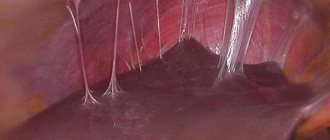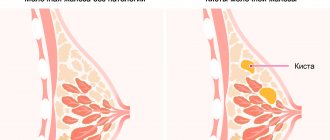Complex methods of treating malignant neoplasms include red chemotherapy, what it is and why it is called that way - let's figure it out in order. The advantages of using specialized drugs and the specific effects of such therapy on the body are:
- Cancer cells are destroyed (partially and sometimes completely).
- Chemotherapy helps control the spread of the disease. This method helps to destroy foci of metastasis.
- Chemotherapy, called red, significantly alleviates the symptoms of the disease, what is it in the general concept - this is explained by the fact that during the fight against cancer, the tumor volume becomes smaller and the compression of internal organs in the affected area decreases.
In most cases, it is impossible for people suffering from malignant neoplasms (breast cancer) to survive without the use of chemotherapy. Reviews from oncologists and patients about this method of treatment are positive, therefore medicines containing red solutions are considered effective and are widely used.
Chemotherapy, depending on the development of the disease in the body, can be used as the main method of fighting cancer, or it can be prescribed after surgery.
In order for chemotherapy, called red chemotherapy, to achieve an effect and help improve the patient’s condition, the attending oncologist uses an individual approach when drawing up a treatment regimen. If chemotherapy drugs are introduced into the human body, it is important to follow the prescribed course of treatment. There must be breaks between the introduction of the red solution into the body so that healthy cells have time to form.
What does red chemotherapy for breast cancer mean?
Red chemotherapy is a special type of conservative drug therapy that uses specific drugs. Medicines belonging to the red group produce a red solution when used.
Its difference from other types of medicinal chemistry lies not only in the difference in the color of the medicines. The main therapeutic essence of the technique is the use of antitumor drugs, which, due to their therapeutic properties, actively destroy the structure of the cancerous tumor and block the process of formation of new atypical cells.
The drugs used in red chemotherapy have the most powerful toxic effect, so it is indicated only in exceptional clinical situations.
Red chemistry is part of the complex treatment of malignant diseases, including mammary glands. It is practiced both as the main treatment and in combination with a radical technique - surgery.
Indications for prescribing a treatment method
Indications for this type of chemotherapy are:
- There is a risk of secondary tumor formation in the presence of metastases in other organs.
- The milder chemotherapy options used turned out to be ineffective.
- An operation is planned, but due to the large size of the tumor, it is impossible to perform all the necessary surgical procedures.
Red chemotherapy for breast cancer is prescribed only for clinical indications. This severity is due to the extremely high toxic characteristics of the drugs, while the negative effect extends not only to cancer cells, but also to healthy tissues of the body.
Effectiveness of therapy
According to medical statistics, after going through all stages of this chemistry:
- 50-70% of cancer patients showed sustained improvement in their condition.
- The number of deaths decreased from 25% to 3%.
- Increases five-year survival rate even in advanced stage breast cancer.
Contraindications for passage
Treatment of breast cancer with red chemotherapy is contraindicated if there is a risk of worsening the patient's condition.
The main contraindications include:
- Significant weight loss.
- Cachexia (extreme exhaustion of the body).
- Low platelet count.
- First trimester of pregnancy.
- Senile age.
- Hormone-dependent breast cancer.
- Increased bilirubin levels.
- The presence of metastases in the liver and brain.
- Recent other types of complex surgeries.
- Severe kidney, lung and liver dysfunction.
- Presence of infectious diseases.
- Severe heart failure.
- The process of metastasis is extensive (metastases affect the liver and brain structure).
- Severe intoxication of the body with the manifestation of typical symptoms.
Induction "chemistry"
Treatment with this type of chemotherapy is prescribed when the tumor has increased or moderate sensitivity to anticancer drugs. Also, it is prescribed if there are contraindications to surgery. In general, the following cases of prescribing induction “chemistry” are distinguished: • for treatment in the presence of leukemia or lymphoma, germ cell diseases of the testicle; • as a palliative measure, with the help of which it is possible to prolong the life of the patient; This approach improves quality of life and reduces symptoms.
Advantages and disadvantages of the treatment method
Despite the excessive aggressiveness, red chemistry has many advantages. Its main advantage is its high efficiency, due to its systemic effect on the malignant process in the body.
| Positive sides | Negative points |
| Helps reduce tumor size. Destroys atypical inclusions remaining after surgery. Has a hostile effect on distant metastases. Stops the reproduction and growth of malignant cells. Kills mutated cells that have entered the blood. | High toxicity of the drugs used. It's hard to bear. It destroys not only malignant inclusions, but also healthy cells. It has an extremely negative effect on the hair, bone marrow and gastrointestinal tract. Anthracyclines suppress the body's immune capabilities. |
Indications
The use of red chemotherapy implies a complete diagnostic examination of the patient at the preparatory stage. The procedure has a large number of side effects and is difficult to tolerate due to its high degree of toxicity. For this reason, it is necessary to assess the condition of the cancer patient’s body as accurately as possible and only then draw up an individual treatment regimen.
The main indications for performing red “chemistry”:
- it is not possible to achieve remission using other methods;
- high risk of developing metastases;
- if surgical intervention is necessary, it is used at the preparatory stage before surgery.
Often, the red version of chemical therapy is used in a comprehensive cancer treatment program.
Features of red chemotherapy for breast cancer
Red chemistry for breast cancer is carried out according to an individual program with mandatory adjustment of the dosage and frequency of medication. It is important to adjust the treatment regimen in such a way that the concentration of active toxic components can effectively inhibit malignant cells, but does not provoke severe intoxication of the body.
Preliminary diagnosis of the body
Due to the fact that under the influence of drugs the body experiences increased stress, in order to avoid unforeseen complications, the patient is prescribed an additional examination.
A thorough diagnosis allows you to exclude:
- Possible contraindications.
- Presence of other chronic diseases.
Complex diagnostic procedures are prescribed:
- Ultrasound.
- Blood chemistry.
- Analysis of urine.
- CT scan with contrast.
- Hormone test.
- Research on tumor markers.
Drug administration schedule
Medicines can be administered in several ways, but intravenous infusion is the preferred option for breast cancer:
- Before administering the medicine directly to the patient, blood pressure and pulse are measured.
- Weight and height are specified, which allows you to correctly calculate the required dose of medication.
- Before chemotherapy, a sick woman must undergo premedication (taking medications that minimize the manifestation of side symptoms).
- The patient lies down on the couch, the necessary drug is administered through a dropper (infusion) in accordance with the established scheme.
As an alternative, a combined type of chemotherapy is allowed - red chemotherapy is initially carried out, and after a break, if the results are positive, yellow chemotherapy drugs are prescribed.
A course of treatment
Usually 2 to 7 courses are prescribed, but their number can be increased to 9, depending on the severity of breast cancer. The average course of treatment is more than 1.5 months.
Between courses there must be a break of 1-6 weeks, which allows the body to recover after severe intoxication. The dynamics of the recovery process are controlled by a doctor.
During breaks, a blood test is required to check the level of white blood cells and other components of the blood fluid.
Red group medications used
As mentioned above, red chemotherapy got its name because of the color characteristics of the drugs, which, when preparing an injection solution, acquire a pronounced reddish tint.
Today, red chemistry is represented by three drugs:
- Idarubicin.
- Epirubicin.
- Doxorubicin.
Each of them has both general and individual medicinal properties against a malignant tumor.
Idarubicin
The medicine is positioned as an antibiotic of the anthracycline group. The active active substance of the drug is idarubicin. Available in the form of liquid for intravenous infusion.
Method of administration: intravenous injection at a very slow speed (over 5-10 minutes). This therapeutic approach makes it possible to enhance the toxic effect of the composition on atypical cells.
After your introduction:
- Having penetrated the DNA molecule, it begins to interact with topoisomerase 2, slowing down the process of nucleic acid synthesis.
- It has a high rate of penetration into cancer cells, thereby exerting an active antitumor effect.
It has low cardiotoxicity compared to other red chemicals.
Doxorubicin
The drug is also an anthracycline antibiotic. The main component of the drug is doxorubicin hydrochloride.
Available in two versions:
- Lyophilisate (red-yellow porous mass).
- Injection solution (clear red liquid).
It is administered into the body through intravenous, intraarterial or intravesical infusion.
Shows anticancer and antibacterial effects. The death of cancer cells occurs as a result of the negative effect of the drug on the synthesis of nucleic acids, DNA, proteins and RNA.
It is used in rare cases in combination with other drugs, due to its very high toxic effect.
Epirubicin
The drug is a cytotoxic antibiotic of the anthracyclic group. The active substance is epirubicin hydrochloride. Release form: red injection solution.
Method of administration: slow intravenous drip infusion over 3-5 minutes.
Epirubicin has a number of therapeutic options:
- Inhibits the synthesis of nucleic acids DNA and RNA.
- Inhibits the production of proteins.
- Suppresses DNA helicase activity.
- Affects DNA transcription and replication.
It is characterized by low toxicity towards cardiac muscle and skeletal tissues.
The medicine must be combined with extreme caution with other medications, as it has the ability to vigorously enter into various chemical reactions.
Platinum chemotherapy
This “chemistry” involves the use of anti-cancer drugs that have a platinum base (meaning Cisplatin, Phenanthriplatin). As a rule, the platinum method is used in the presence of lung cancer, at stage 4 of gynecological oncology. There is an opinion among patients that the prescription of platinum chemotherapy indicates a deplorable condition. The use of platinum drugs is explained by their ability to affect areas of the body that cannot be affected by other chemical agents. In addition, it is platinum drugs that have the most pronounced therapeutic effect in some malignant tumors.
Negative consequences of red chemotherapy for breast cancer
Red chemotherapy is characterized by increased aggressiveness, therefore, during its passage, specific side effects occur. They are especially pronounced in patients who have taken increased doses of drugs for a long time.
How is the course of procedures tolerated? During or after completion of the course, the patient may feel:
| Organs and systems of the body | Nature of negative symptoms |
| Gastrointestinal tract | Nausea. Vomit. Abnormal stool. Decreased or loss of appetite. Fast weight loss. Changing taste preferences. Intestinal inflammation. Erosive formations in the intestines. |
| The immune system | Weakening of the body's protective functions. Lethargy. Severe weakness. Resistance to bacteria and various viruses decreases. |
| CNS | Neuropathy. Decreased concentration and memory. Increased anxiety. Fear. Cramps. Headache. Mental disorders. |
| Leather | Destruction of the hair follicle. Hair loss on the scalp (alopecia). Loss of eyebrows and eyelashes. |
| ENT organs | Hearing loss. |
| The cardiovascular system | Swelling of blood vessels. Thrombosis. Anemia. Myocardial dystrophy. Blood cancer (leukemia). Interruptions in cardiac activity. |
| Bone marrow structure | Pathologies of bone marrow tissue. |
| Endocrine system | Impaired functionality of the thyroid gland. |
| Reproductive organs | Failure of the monthly cycle. Impaired functioning of the ovaries. |
| Muscle tissue | The tendency to form bruises and hematomas increases. |
| Laboratory indicators | Decrease in the number of leukocytes. Decreased hemoglobin. |
To prevent the negative consequences of red chemistry, when calculating the dosage of a medicine, the doctor must take into account:
- Total weight of the patient.
- Age.
- Presence of concomitant diseases.
- The nature of the malignant tumor (size, stage, presence of metastases and structural features of the tumor).
To reduce the severity of negative effects, additional medications are prescribed:
- Analgesics.
- Sedatives.
- Antiemetics.
- Tranquilizers.
- Vitamin complexes.
Negative symptoms are temporary, so there is no need to be afraid of them. In addition, its occurrence depends on the individuality of the body - how quickly it recovers from the attack of toxic substances.
High dose chemistry
This type of chemotherapy involves the use of increased dosages of anticancer drugs. As a rule, this approach is used in the presence of various types of lymphomas. The use of increased doses of cytostatics leads to a proportional increase in effectiveness in eliminating malignant lymphomas. Also, this approach avoids resistance of cancer cells to the effects of drugs. However, an increased dose has a great detrimental effect on healthy cellular elements.
Recommendations for the treatment of breast cancer
In order to make it easier to endure unpleasant sensations and reduce their intensity, experts advise following the following recommendations:
- It is important to organize proper and regular nutrition.
- The diet should contain an increased amount of protein, carbohydrates and vegetable fats.
- Preference should be given to cereals, vegetables and fruits.
- Consumption of sugar and animal products is in small quantities.
- Avoid fried, fatty foods, canned foods and smoked foods.
- Drinking plenty of fluids accelerates the removal of toxic medicinal components from the body, so it is necessary to maintain a water regime (at least 2.5 liters of water per day).
- Suitable liquids include milk drinks and green tea.
- Coffee, strong tea and alcohol are prohibited.
- If severe pain occurs due to disruption of the gastrointestinal tract, painkillers may be taken with medical permission.
conclusions
Red chemistry for breast cancer may be the only therapeutic method that will help a sick woman finally cope with a serious illness.
Despite the specific features of the procedure, which include the ability to cause severe side effects, experts note its high therapeutic effectiveness. As oncology practice shows, therapy allows one to achieve stable remission, thereby prolonging the patient’s life.
( 1 ratings, average: 5.00 out of 5)










